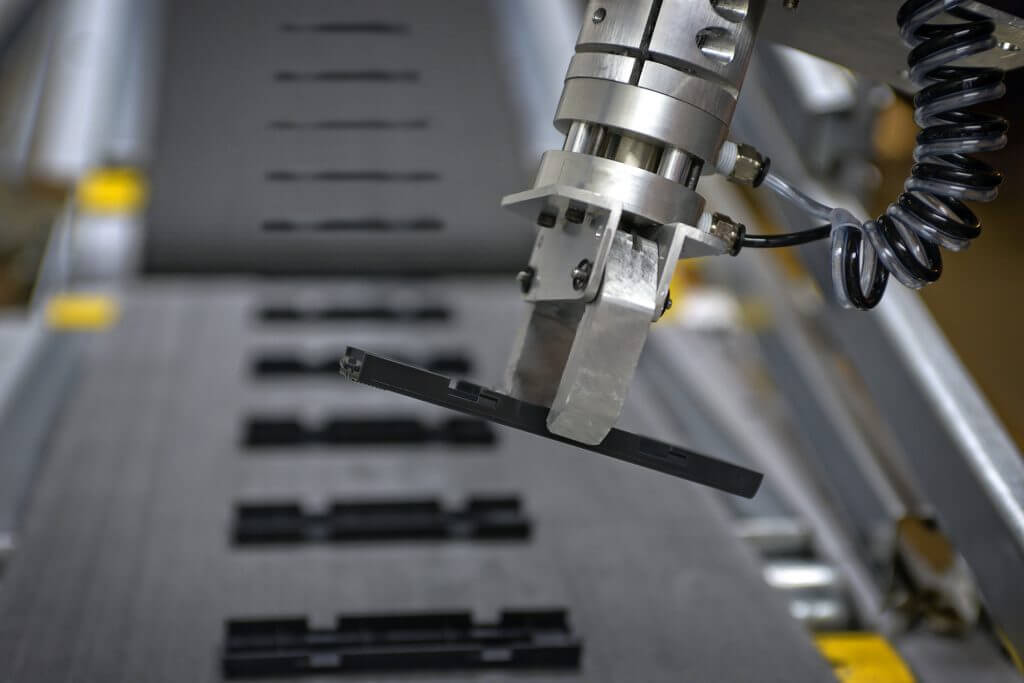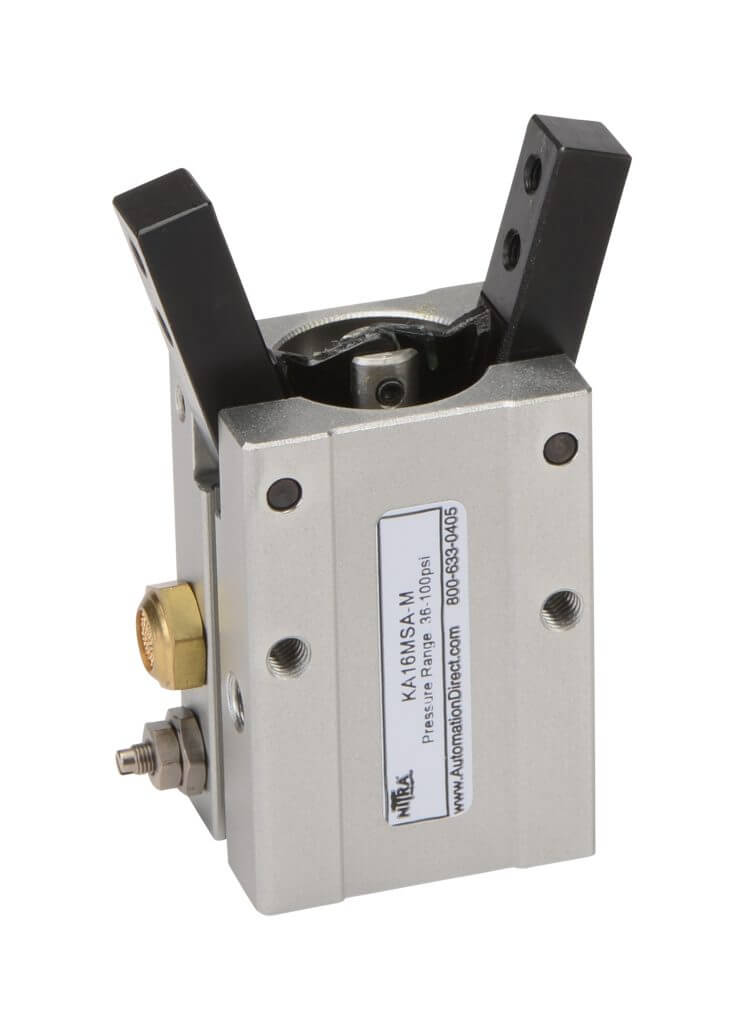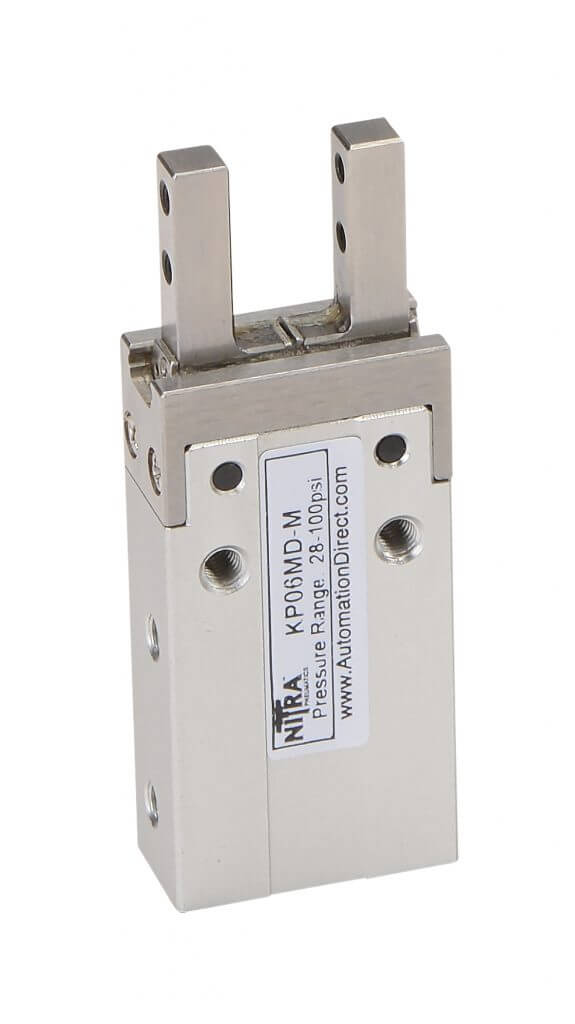Pneumatic grippers are a common and useful way for machines to handle product and other items, but they must be properly selected to match the payload.
Pat Phillips, PE, product manager for fluid power and mechanical products at AutomationDirect, wrote an article for the October 2019 issue of Fluid Power World titled Getting a Grip with Pneumatic Grippers. Here’s a summary, click on the link above for the full text.
Prior to the industrial revolution, grippers used in manufacturing were human hands and simple implements. Engineering and safety advancements have led to automated grippers that can reliably manipulate and pick-and-place payloads.

The first decision when selecting grippers is using electric, hydraulic, or pneumatic actuation. Payloads must be cleanly gripped and released, with enough force maintained throughout any motion, but without causing damage.
Electric technologies are good for fine control and hydraulic is necessary for heavy-lifting applications. However, for many applications with robust payloads, pneumatic grippers offer the best combination of performance, simplicity, and cost effectiveness.
Pneumatic Benefits
Pneumatic grippers usually represent the lowest initial cost, along with relatively low operating costs.
Pneumatics are fairly compact and offer a high force density, which is the force they can exert in relation to their size. Compressed air is a relatively safe energy source compared to electricity and works well in wet or corrosive areas.
Grippers are available in various mechanical types and arrangements.
Gripper Types
Grippers are also called clamps or end effectors. There are many variations, but the two basic types are angular and parallel.

Available in many dimensional sizes, this family of AutomationDirect Nitra angular grippers are optimized for handling flat or sheet objects.

Parallel grippers, such as this AutomationDirect Nitra version, come in many size configurations and offer good holding power for larger payloads.
Gripping can be accomplished on the outside or inside of a payload. Small pneumatic cylinders and springs provide the force required for the motion and gripping. Angular grippers are mechanically simpler than parallel and are best suited for gripping flatter objects. Parallel grippers are slightly more expensive and are a better choice for larger payloads.
Making Contact
Gripper appendages are called fingers and are available in various sizes and materials to optimize grip friction and resiliency. Designers must consider the grip stroke, how much misalignment is expected, and the air pressure needed to create sufficient but not excessive force.
Integrating Pneumatic Grippers into a System
Many times grippers must be integrated into a much larger PLC-based or robotic system.
Grippers may be a relatively inexpensive part of such a system, but if they can’t perform their required function then nothing gets done. Another mechanical consideration regards the cycle rate, which is how many times per minute the gripper is rated to operate.
Once the pneumatics are sorted out, the electrical and control aspects must be reviewed.
Feedback Options
Best practice is to positively sense a gripper’s open or closed position for the most reliable operation. Many pneumatic grippers are designed with provisions such as magnetic pistons and slots to accept position switches. Monitoring, and possibly controlling, the pneumatic pressure is recommended for more delicate operations.
Getting a Grip
Grippers are a fundamental element for many types of equipment automation, and they are the final interface where the equipment meets the product. Pneumatic grippers are a good choice technically and economically for many automated equipment applications.
AutomationDirect offers online guides to help users consider gripper types, action, size and limit switches—providing close integration with the automation system and the rest of the equipment.

